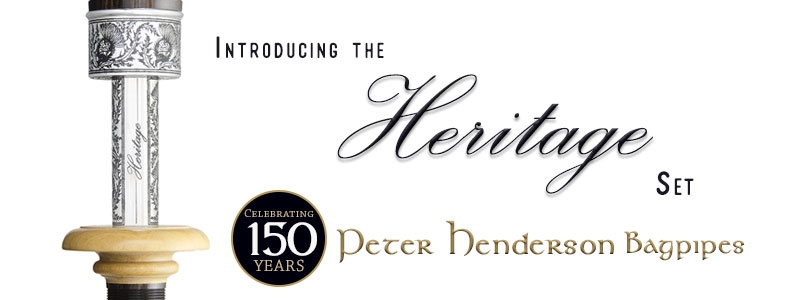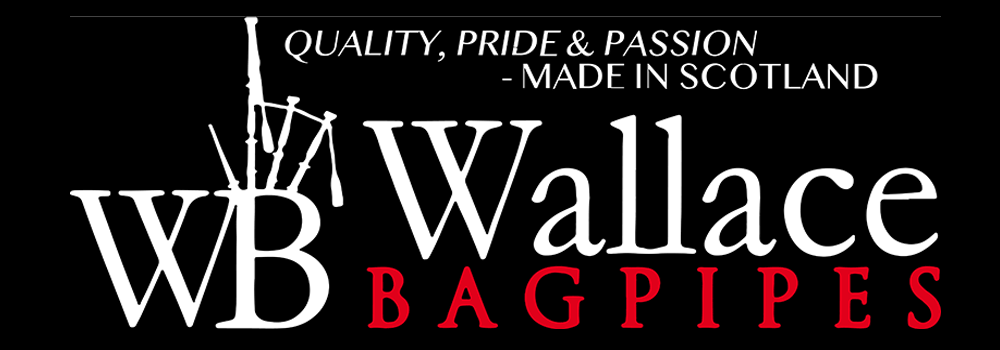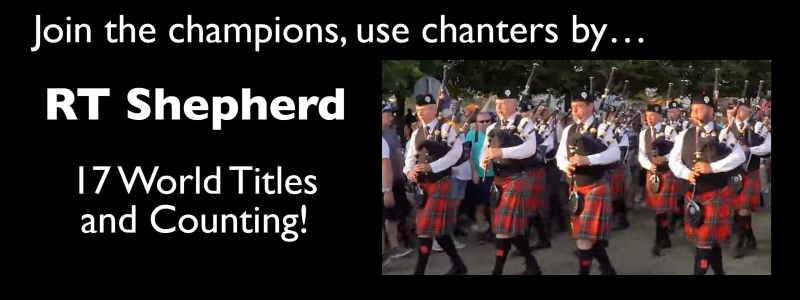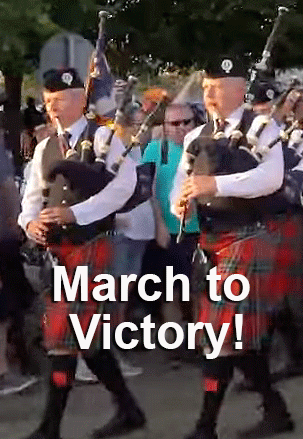Robert Wallace: Thanks to the RSPBA’s MAP system of tunes for lower grade bands we are hearing 2/4 marches more and more these days. And so we should. More difficult than the ubiquitous 4/4 or 3/4, they have all the dash and vigour we associate with real Scottish pipe music. Harder to play than the former of course, so in this lesson I will try to give you some pointers as to how to get the best expression out of them.
The first thing to remember about 2/4s is this increased difficulty; they require a timing discipline and dexterity of finger not required for our retreats or our more leisurely paced marching tunes. Therefore do not play 2/4s which are too difficult for you. Keep to the easy tunes until you have mastered the basics of the art.
In the introduction to my Glasgow Collection you will find a summary of the ground rules for good 2/4 march playing:
1 A steady tempo
2 Two beats to the bar
3 A ‘strong and medium’ pulse
4 Demarcation of two-bar phrases
To that we can add the odd idiosyncrasies associated with each differing melody but that is not something which concerns us here. The first. We must play in such a way that we can march with ease to our tunes. It is impossible for a piper, a body of pipers, or anyone to stride out to a tune that has an erratic beat. We very quickly start bumping in to one another, or other things, as we stagger about – hence the required thump, thump of the bass drum in the marching band. When playing on our own we are fortunate in not having this constant boom in our sensitive eardrums, but the downside is that we are presented with the task of keeping our own time. To some this comes naturally; for others it must be learned. A metronome (most smart phones have the app) can be a great help here. Play along with one and you will see what I mean. Nor is it as easy as it seems. You won’t be the first to go off the beat and blame it on the machine by the way.
But the greatest impediment to a controlled pulse is fitting in the required fingering. This brings me back to my earlier point: the easier the tune the easier steady tempo will be mastered, for remember, we NEVER, no NEVER, compromise technique for speed. If you can’t get the work in at a reasonable tempo, then find a simpler piece to play. There are dozens of them around; the Seaforth Collection is a good source and there are two or three in my own book. Before switching tunes however try the piece you are struggling with at a slower tempo and see if that helps.
If you can manage all the fingering and the pace is not too slow, then you are on the right track. Increased speed will come with practice. Professional pipers and top bands need to play at a brisk lick. Down the grades and you can relax a good bit. For amateur and junior pipers anything between 55 and 60 beats to the minute, or slightly slower, will suffice. The lift, that essential brightness in delivery in any tune, does not come from the tempo it is played at, but from the assiduous application of rules 1 – 4 above.
To my second point: two beats in the bar. Mark these out by beating time with your feet, left and right. Consciously think of the small offbeat that comes between these two main beats and that will prevent either coming in too early or too late. When beating time the offbeat comes in where the toe is at its highest. The illustration below has the offbeat marked with an asterisk. Another aid to catching the correct rhythm is to sing the tunes over and over to yourself (singing is a great assist in all piping). Try beating your feet left and right as you sing and try it too to someone else playing, perhaps on a recording, and you will soon get the hang of it.

Once you have the right idea, try stretching the left foot beat ever so slightly to give you the required ‘strong – medium’ rhythmic pulse. Suddenly your tunes will start to come alive, what was a procession of notes given some shape, some impetus. This stretching of the beat is something we have to do in piping to bring expression to what we play. We do not have dynamic control (though in the band the drummers can help) so we must learn to ‘point’ the important notes, but – and this is the crucial point – without compromising steady tempo. If you are guilty you are trying too hard. Just a slight touch on the left foot is all that is needed. Overpointing is as bad as none at all.
Finally we need to let the listener hear the individual phrases that make up the melody. If we don’t the tune just becomes a hurdy-gurdy melody lacking in meaning. It is good phrasing that singles out the well-taught piper, the thoughtful one, from the not so. How do we achieve it? Well firstly you must study your music. We are lucky in that most 2/4 marches are built on the two-bar phrase pattern. This gives us this well-known sequence of ‘question and answer’.
The first two bars will be the first question, the second two our first answer which we don’t quite approve of. So we ask the question again (the first two bars are repeated) and the next time the answer comes we are satisfied and move on. We mark out these phrases by pausing ever so slightly at the ends of the phrases. Where these fall will become evident with your study of the music, and it is always worthwhile when learning a new piece to mark the phrases with a pencil like this:
So there you have it. Some simple guidelines to playing your 2/4 marches. It is one of the most satisfying forms of pipe music to perform and one that will charm your listeners much more readily than the simpler stuff. So have a go. You won’t be disappointed.
Here is a list of good, simple 2/4 marches you can tackle at an early stage of your learning or when you initially want to apply the above rules to these tunes: Highland Laddie, Brown Haired Maid, Campbell’s Farewell to Redcastle, Corriechoillie, Teribus, Barren Rocks, Corriechoillie, Drunken Piper, Greenwoodside, High Road to Gareloch, Miss Delicia Chisholm, O’er the Hills and Far Away, and the Sweet Maid of Glendaruel. You can download an mp3 of any or all of these tunes from the Piping Press Shop. Each tune is played in slow time and then closer to performance tempo. Each is on the practice chanter so you can easily play along and get the way of the tune. Here is a sampler:
























